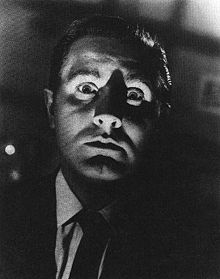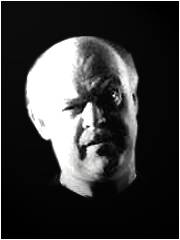Info On This Retro-Futuristic Comic Book:
Le Rayon U (The U Ray) is a comic book written and drawn by the Belgian comics creator Edgar P. Jacobs in 1943.
Publication history
In 1941, the outbreak of war between Germany and the USA meant that American comic strips could no longer be imported into Nazi-occupied Europe.[1]
Alex Raymond's strip, Flash Gordon, was then being published in the Belgian comics magazine Bravo. Artist and former opera singer, Edgar Pierre Jacobs was therefore asked to bring the current story to a satisfactory conclusion, which he did. He was then commissioned to produce a science fiction comic strip of his own. Le Rayon U ("The U-Ray") began serial publication in Bravo in 1943.[1] This version had text boxes which described the action and the dialogues in the style of many Belgian comics of the time, similar in a way to Hal Foster's version of Tarzan and Prince Valiant.
In 1974 Jacobs reformatted Le Rayon U in order to include speech bubbles. This version was published in the comics magazine Tintin, and in book form by Dargaud-Le Lombard.
Synopsis
Le Rayon U is set on an Earth-like planet which combines elements of the distant past, present and far future. Two of its nations, Norlandia and Austradia, are in conflict. A Norlandian scientist, Marduk, has devised a weapon called the "U Ray", but requires a mineral called uradium in order to put it to actual use.
Marduk therefore organises an expedition into an unknown part of the planet in order to find the uradium. Those accompanying him include: his assistant Sylvia Hollis; the explorer Lord Calder; Adji, Calder's Indian manservant; and Major Walton and Sergeant Mac Duff of the Norlandian secret service.
The explorers encounter all manners of threats, including prehistoric monsters, giant snakes and tigers, a tribe of hostile ape-men, and the meddling of Austradian spy Captain Dagon. More welcoming, but no less intriguing, is a civilisation of Aztec-like people.
Characters
In itself Le Rayon U is a classic of Belgian science fiction, but the influence of Flash Gordon cannot be denied:
- The Austradian Emperor Babylos III resembles Ming the Merciless;
- In appearance, Marduk, Lord Calder and Major Walton are similar to Hans Zarkov, Prince Barin and Flash Gordon respectively;
- Like the dark-haired Dale Arden, the dark-haired Sylvia Hollis is coveted by almost every male character she meets, be it man or beast!
Marduk, Calder and Dagon were to be the models for Mortimer, Blake and Olrik, in Jacobs's classic series Blake and Mortimer.
Extracts Taken From: http://en.wikipedia.org/wiki/Le_Rayon_U
More Info: http://en.wikipedia.org/wiki/Edgar_P._Jacobs


+001.jpg)
+001.jpg)


+001.jpg)
+001.jpg)

.jpg)

.jpg)

